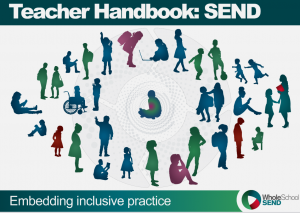
Introducing Behaviour Dialogues
Teachers’ beliefs about their learners and what they can achieve has a significant impact on learning and progress. This is great news for teachers – you can make a difference. The CCF recognises that ‘Teachers have the ability to affect and improve the wellbeing, motivation and behaviour of their pupils. Teachers are key role models, who can influence the attitudes, values and behaviours of their pupils. Teacher expectations can affect pupil outcomes; setting goals that challenge and stretch pupils is essential. Setting clear expectations can help communicate shared values that improve classroom and school culture. A culture of mutual trust and respect supports effective relationships. High-quality teaching has a long-term positive effect on pupils’ life chances, particularly for children from disadvantaged backgrounds.’
As such, it is vital that teachers who are just starting out are given as firm a grounding, and as much support as possible, in classroom management so maximise learning time for the teacher and pupil.
Classroom management can often be one of the most difficult areas of an experienced teacher’s practice to unpick. Experienced colleagues who can settle a class with a ‘teacher look’, can seem like a magician to a less experienced teacher, who wonders how on earth they can get to the point of having that kind of control over a class.
In your role as a GM you are able to sweep aside the curtain and reveal the true magic behind that ‘look’: consistent routines; clear boundaries; building positive relationships with pupils and families, among other things.
Managing the behaviour of others does not come easily to some, and it should not be assumed that trainees find it so. Nor should it be assumed that time in a classroom by itself will provide the beginning teachers need in this area. Like for other aspects of professional knowledge, it can be improved through the structured exploration, evaluation and elaboration.
In relation to inclusive pedagogy and behaviour, reference to the language that we use can be significant. Pages 14 and pages 148-9 of the handbook provide some helpful insights in this regard. Additionally the information that relates to barriers to learning and reasonable adjustments on page 45 might be helpful to reference.

These questions may help you to explore, evaluate and elaborate your trainee’s professional understanding in relation to behaviour.
- To what extent do you establish a physically and emotionally safe learning environment?
- How do you ensure that you have provided a stimulating learning environment for all pupils?
- How do you evaluate the extent to which you promote mutual respect and inclusion within your classroom?
- How do your classroom routines support positive behaviour and maximise learning time?
- How do your positive relationships with your learners (and their carers) impact on student behaviour and engagement?
- Do your explanations and questioning strategies help to build a positive and predictable environment for learners?
- To what extent are you drawing upon school reward and sanction policies to support your interventions?
- Are you consistent and predictable in your responses to any instances of poor behaviour?
- Have you considered if a pupil’s behaviour is a sign of an unmet learning need?

Behaviour guidance was published along with the ITT Core Content Framework in November 2019. This 2-page summary explains the features of effective behaviour management for trainees.
This article explains how a safe and stimulating environment for pupils is embedded in the classroom is assisted by a culture of positive classroom routines.
Interesting and easily digestible explanation of 6 key factors to Improving Behaviour in Schools.
Paul Dix (writing for the Chartered College of Teaching) shares his thoughts.
Alex Quigley (Impact Journal, Chartered College of Teaching) shares some practical ideas.
Praise, reward and explicit instructions are covered in this TES Teacher TV clip.

